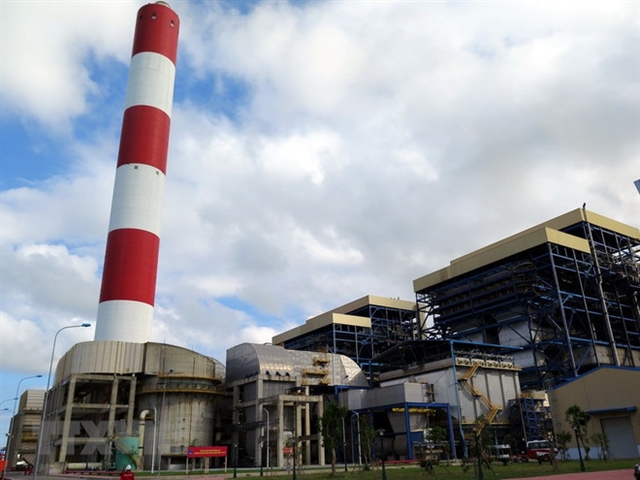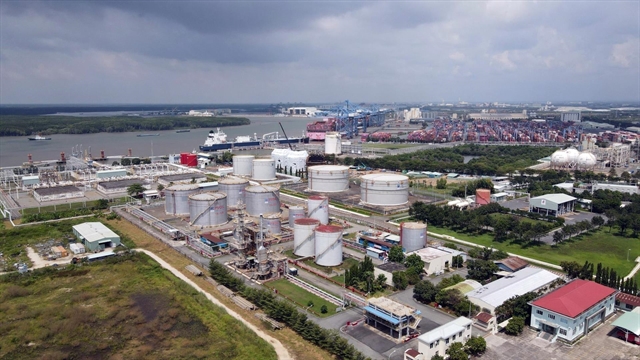Without timely measures to develop power sources - particularly clean and sustainable energy - the country could face electricity shortages between 2026 and 2028.
HÀ NỘI - Việt Nam's objective to achieve double-digit economic growth in the coming years is driving a sharp rise in electricity demand, heard participants at a forum held on Monday in Hà Nội.
Experts speaking at the Vietnam Energy Forum 2025 said that without timely measures to develop power sources - particularly clean and sustainable energy - the country could face electricity shortages between 2026 and 2028. This challenge underscores the urgency of reviewing and refining energy policies to support national development goals.

Dr Chử Văn Lâm, Permanent Vice Chairman of the Vietnam Economic Science Association, said economic expansion and the increasing reliance on digital platforms require stable and flexible energy sources. Projections indicate that electricity demand must grow by 12 to 16 per cent annually to sustain development, necessitating planning and investment strategy adjustments.
The Southeast Asian country has introduced several policies to address this challenge, including the amended Electricity Law (2024) and the revised Power Development Plan VIII. Under the latest adjustments, total domestic power capacity (excluding exports and risk-prone thermal power) is set to reach 183,291 - 236,363 MW by 2030, an increase of up to 80,819 MW.
The plan also boosts the sharing of renewable energy, such as onshore wind and solar, and includes biomass, waste-to-energy, geothermal, storage and nuclear power. Notably, nuclear energy is expected to contribute 6,000 - 6,400 MW by 2030 - 2035.
Despite policy advancements, renewable energy projects still face significant hurdles. Complex investment procedures, unattractive electricity prices, and high capital and technology requirements for offshore wind energy have slowed progress.
Additionally, a lack of regulations for flexible power sources and energy storage presents further challenges. Liquefied natural gas (LNG) projects, governed by Decree No. 56/2025/NĐ-CP, require further incentives to accelerate investment, while nuclear power development depends on refining legal frameworks.
To address these issues, Associate Professor Dr Huỳnh Thành Đạt stressed the importance of reviewing and improving energy policies. The government is expediting the amendment of the Atomic Energy Law to formalise nuclear power development.
Meanwhile, Vietnam Energy Association Vice President and Secretary General Nguyễn Anh Tuấn proposed revising the Law on Efficient Energy Use to ease investment pressures on power generation and transmission. He also called for flexible pricing policies for pumped-storage hydropower and battery systems and resolving investment bottlenecks in renewable energy projects.
Dr Đặng Huy Đông, Director of the Institute for Planning and Development Research, emphasised the need to mobilise large-scale capital from global financial institutions. He warned that unclear financial security and risk-sharing regulations could deter foreign investors. Additionally, ensuring currency convertibility would be critical to maintaining investment flows for essential energy projects, particularly amid forex market constraints.
Private sector

Vingroup’s recent proposal to invest tens of billions of US dollars in renewable energy and LNG power projects between 2025 and 2035 is seen as a positive signal, reflecting strong interest from major investors in the sector.
Trần Anh Thái, Deputy General Director of ATS Joint Stock Company, noted that attracting sustainable and large-scale investment into Việt Nam's power industry required addressing systemic challenges.
He emphasised the need for a well-structured, long-term, and stable regulatory framework, given the industry's capital-intensive nature, long construction timelines, and slow capital recovery. Additionally, developing a highly skilled workforce, securing financial resources, and selecting appropriate technologies would be crucial factors.
Thái pointed to international renewable energy projects, such as the 2 GW solar farm in the UAE, which offers a highly competitive electricity price of US$1.32/kWh with integrated battery storage. This raises questions about the key factors behind price competitiveness and provides important insights for shaping the country's renewable energy pricing policies to attract investors effectively.
The draft Strategy for Việt Nam's Power Sector Development to 2030, with a Vision to 2050, outlines significant investment needs. Under the baseline scenario, an estimated $136.3 billion will be required for both generation and transmission from 2026 to 2030 - an average of $27.3 billion per year. Higher investment scenarios project annual capital needs of $36.5 billion and $40.7 billion, respectively.
Experience from 2017 to 2020 showed that an attractive feed-in tariff (FIT) policy successfully attracted around $13 billion in private investment for renewable energy. However, the current landscape has shifted, with a pricing framework replacing FIT rates. Negotiations over power purchase agreements (PPAs) for transitional projects remain challenging. VNS





